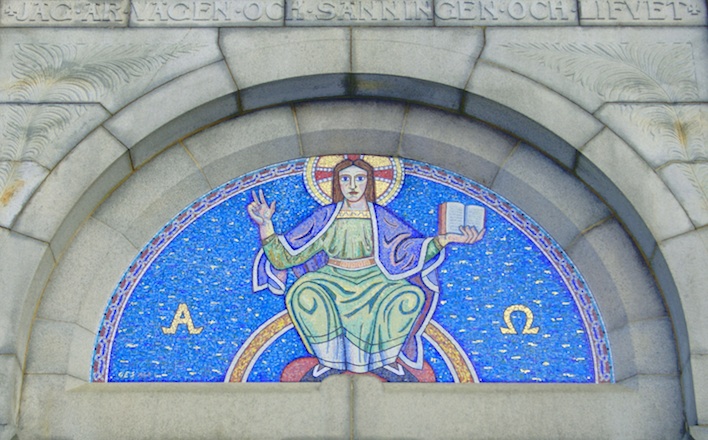Commentary on 1 Peter 2:2-10
As a Christian young person, I remember hearing that the New Testament letters begin with theology and move to practice (e.g., Romans 1-11, then 12-16).
I’ve learned since that there is nothing hard and fast about such a pattern. In fact, by the time we reach 1 Peter 2, we’ve already heard five major exhortations that begin the body of this letter. Believers are called to hope (1:13), to be holy (1:15), to be circumspect in their living (1:17), to love one another deeply (1:22), and, at 2:2, to desire what will bring about their growth, especially the Lord Jesus himself (with a nod to Psalm 34:8 in 2:3). Now, after this litany of actions to pursue, Peter grounds these exhortations in who believers are — he turns to issues of identity in 2:4-10.
Knowing one’s true identity is transformative. Melba Pattillo Beals was a 17-year-old African American girl living in Little Rock, Arkansas when she and eight other students integrated Central High School in 1957. Segregationists, spurred on by Arkansas Governor Faubus, defied the Supreme Court’s edict to integrate and attempted to halt integration. The African American students, known as the Little Rock Nine, experienced tremendous adversity in their quest for acceptance by the white majority.
Melba Beals was motivated to continue the fight for integration by her wise grandmother who said, “We are…God’s ideas [and] you must strive to be the best of what God made you.”1 Grandma India gave her granddaughter the gift of identity. She affirmed that, as a young black woman, she was “God’s idea.”
Peter seems intent on transforming his beleaguered audience, not simply by telling them what to do but, more deeply, by reshaping their identity in line with their Lord and their new heritage. And he begins with a potent image of stones being built into God’s temple.
In this word picture, Jesus is the living stone whom these believers have embraced and in whom they have found their hope. Jesus is also the cornerstone rejected by people but of greatest value to God (2:4, 6). The connecting point for Christian identity comes in verse 5, “You yourselves are being built like living stones into a spiritual temple” (Common English Bible). The follower is being made into the image of the master. And the followers together are being built into God’s temple to “offer up spiritual sacrifices.”
The image set is complex and beautiful. Rather than viewing true worship as what happens in the temples to various gods spread across the cities of Asia Minor, Peter draws on this image of stones. Suggesting that acceptable worship arises in small, house-church communities of Jesus followers scattered across this region, where these “stones” gather together to proclaim their allegiance to Jesus the Messiah (3:15).
But Peter is not yet finished with the metaphor. As believers are made in the image of their Lord, they also participate in the value God has placed on the cornerstone, Jesus. Though he was rejected, the final word drawn from the Old Testament Scriptures about Jesus is not “rejected” but, instead, “valuable” and “chosen” (2:6). Believers share in that verdict from God, even as they are currently rejected and maligned by their neighbors who do not yet believe (4:3-4). Peter writes that “God honors [those] who believe” in the cornerstone (2:7; referencing Psalm 118:22), even as those who do not believe end up stumbling over that very same stone (2:8; referencing Isaiah 8:14).
One of the striking features of 1 Peter is how often the Old Testament shows up in a letter that is, by all accounts, written to Gentile believers in Jesus (see 1:18; 4:3). So far in this passage we have heard at least four references to different Old Testament passages (from Psalms and Isaiah). In the concluding verses the author draws from Exodus, Isaiah, and Hosea to ground his Gentile audience in the identity of Israel — God’s covenant people.
The first half of 1 Peter 2:9 echoes the language God uses to describe Israel’s identity as they are redeemed from Egypt to be God’s possession (Exodus 19:5) and to be “a kingdom of priests for me and a holy nation” (19:6; Common English Bible). As Israel was called into being as the people of God to live out God’s mission to the world (the meaning of “a kingdom of priests,” with priests being those who bridge between God and others), so those who read 1 Peter as Scripture are identified as “God’s own possession” to testify to God’s “wonderful acts” (2:9).
To highlight God’s wonderful acts, the author concludes with Hosea in Acts 2:10. Israel’s disobedience had put them at risk as God’s people in the time of Hosea; if it had not been for God’s unfailing loyalty to them, they would not have survived as God’s people. Those who had at one time existed outside of God’s covenant and had not been recipients of God’s mercy — the Gentiles of Peter’s audience — have now been welcomed into God’s family by the unfailing mercy of God.
Whether new to faith or long-time believers, the people of our congregations need to be grounded in their identity in Christ in ongoing ways. Whatever their circumstances, they can derive a profound sense of hope (1:13) from hearing that they too are God’s precious stones, built upon that living cornerstone. They are God’s own possession and have been brought from darkness to light to offer spiritual sacrifices and to proclaim God’s wonderful acts of mercy.
Notes:
1. Melba Beals, Warriors Don’t Cry (New York: Simon Pulse, 1995), 10


May 14, 2017